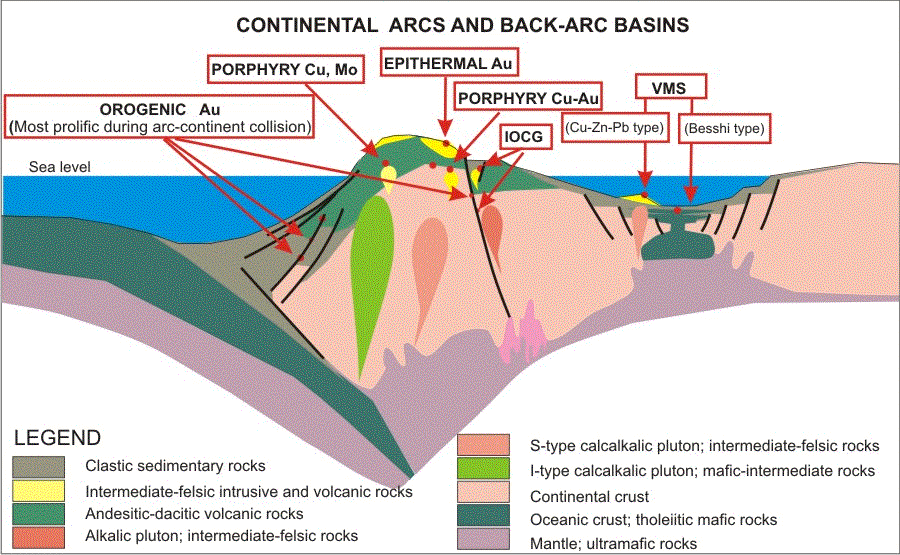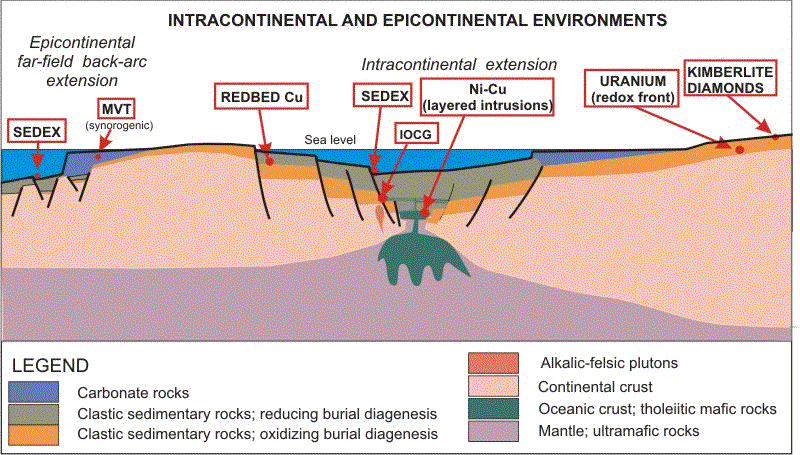 Figure 13  Figure 14  Figure 15 カナダ地質調査所(Geological Survey of Canada)による『Mineral Deposits of Canada Maps of deposits and resources(world)』から |
An Overview of the Economic and Geological
Contexts of Canada's Major Mineral Deposit Types
by John W. Lydon
Contents of this page:
Abstract
Introduction
Scope Of Overview
Production, Reserves, and Resources Statistics
Economic Contexts and Characteristics of Canada's Mineral Resources
Geological Environments and Distribution of Canada's Mineral Resources
Geological and Economic Characteristics of Canada's Mineral Deposit
Types
Conclusions
Acknowledgements
References
Tables
Figures
Seven mineral deposit types have contributed over 90% of the value of non-ferrous metalliferous mineral production in Canada. Based on average 1996 to 2005 inflation-adjusted metal prices, to the end of 2005 the most productive mineral deposit types have been
1.magmatic Ni-Cu deposits (>$372 billion), mainly from Proterozoic
rocks in the Sudbury and Thompson areas;
2.volcanogenic massive sulphide (VMS) deposits ($192 billion),
mainly from Archean greenstone belts of Quebec and Ontario, the
Proterozoic volcanic belts of Manitoba, and Paleozoic volcanic
rocks of New Brunswick; and
3.lode gold deposits ($132 billion), mainly from quartz-carbonate
veins of Archean greenstone belts of Quebec and Ontario. Collectively,
porphyry, sedimentary exhalative (SEDEX), Mississippi Valley,
and uranium deposit types have contributed about $140 billion,
and diamonds, a relatively new but growing mineral commodity for
Canada, has contributed $8 billion.
The dollar equivalent of metal contents per tonne of ore mined
over the past five years range from about $130/t to about $350/t
for most underground base metal and diamond mines, and $90/t to
$300/t for most underground Au mines. Dollar equivalent of metal
contents exceed $450/t only in a few metal mines. The average
ore dollar equivalent of metal contents range from $10/t to $45/t
for open pit metal mines. The most valuable ores are those of
U deposits of the Athabasca Basin, where past production has averaged
dollar equivalent of metal contents of $540/t, and current reserves
are worth $1,000/t to $11,000/t, based on the ten year average
value for U, or over three times these values based on the average
2006 uranium price.
About 50% of production and 57% of the $1.57 trillion of the non-ferrous metal and diamond content of total mineral resources are associated with volcanic arcs and back-arcs that were accreted to, or built upon, continental margins during the assembly of supercontinents. Deposit types include VMS, porphyry, komatiitic Ni-Cu deposits, and intrusion-associated Au, as well as orogenic lode gold deposits associated with collisional tectonism. Mineral deposits of mafic-ultramafic magmas, whose emplacement is associated with structures that dislocate or perforate continental crust and penetrate the mantle, and include magmatic Ni-Cu and kimberlite diamond deposits, account for 40% of production and 33% of total mineral resources. Mineral deposits associated with intracontinental or epicontinental sedimentary basins account for the remaining 10% of both production and total mineral resources.
 Figure 13  Figure 14  Figure 15 カナダ地質調査所(Geological Survey of Canada)による『Mineral Deposits of Canada Maps of deposits and resources(world)』から |